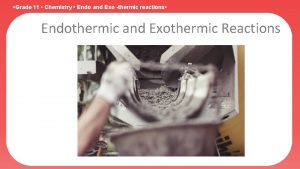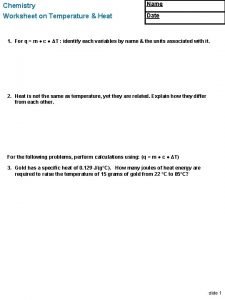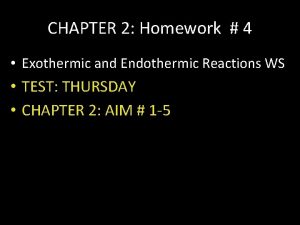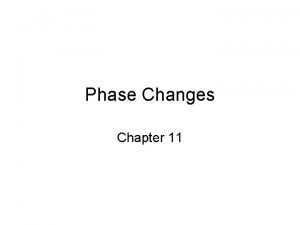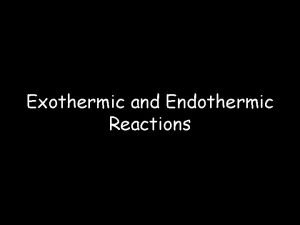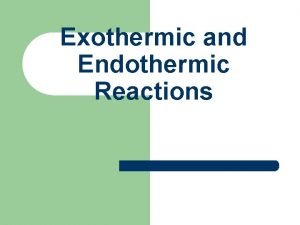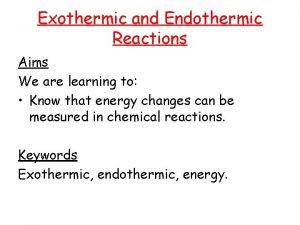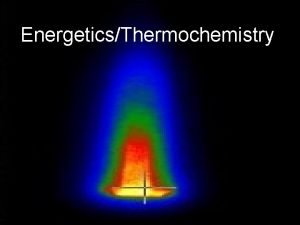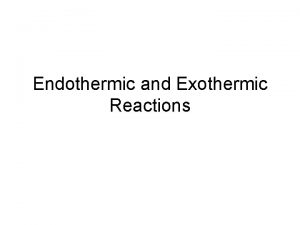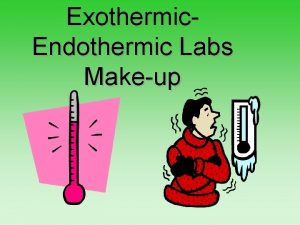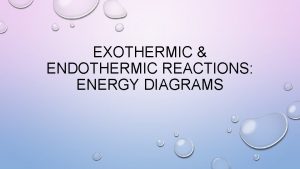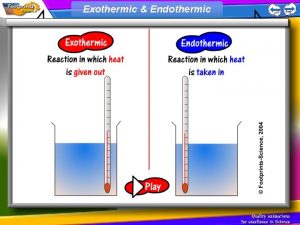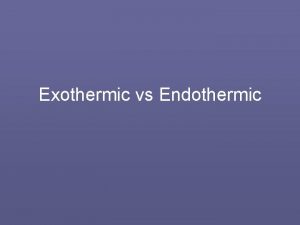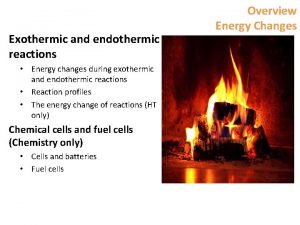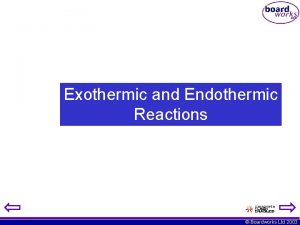Endothermic Exothermic 1 Exothermic and Endothermic Processes u









- Slides: 9

Endothermic & Exothermic 1

Exothermic and Endothermic Processes u Essentially all chemical reactions and changes in physical state involve either: a) release of heat, or b) absorption of heat 2

Exothermic and Endothermic Processes u. In studying heat changes, think of defining these two parts: • the system - the part of the universe on which you focus your attention • the surroundings - includes everything else in the universe 3

Exothermic and Endothermic Processes uuniverse: the system and it’s surroundings. u. Thermochemistry is concerned with the flow of heat from the system to it’s surroundings, and vice-versa. 4

Exothermic and Endothermic Processes u. The Law of Conservation of Energy states that in any chemical or physical process, energy is neither created nor destroyed. • All the energy is accounted for as work, stored energy, or heat. u. Euniverse = Esurroundings + Esystem = 0 5

Exothermic and Endothermic Processes u. Endothermic (absorption of heat) • System gains heat (gets warmer) as the surroundings cool down. • Heat flowing into a system from its surroundings: • Defined as positive • Q (heat) has a positive value Q>0 6

Exothermic and Endothermic Processes u. Exothermic (release of heat) • System loses heat (gets cooler) as the surroundings heat up. • Heat flowing out of a system into its surroundings: • Defined as negative • Q (heat) has a negative value Q<0 7

Exothermic and Endothermic u. Every reaction has an energy change associated with it u. Exothermic reactions release energy, usually in the form of heat. u. Endothermic reactions absorb energy u. Energy is stored in bonds between atoms (chemical potential energy) 8

Endothermic and Exothermic ∆H>0 (+) ∆H<0 (-) 9
 Endothermic and exothermic reactions grade 11
Endothermic and exothermic reactions grade 11 Endothermic and exothermic worksheet
Endothermic and exothermic worksheet Exothermic and endothermic homework
Exothermic and endothermic homework Endothermic vs exothermic
Endothermic vs exothermic Vaporization endothermic or exothermic
Vaporization endothermic or exothermic Exothermic vs endothermic
Exothermic vs endothermic Methane oxygen endothermic or exothermic
Methane oxygen endothermic or exothermic Exothermic v endothermic
Exothermic v endothermic 6 phase changes
6 phase changes Endothermic reaction examples
Endothermic reaction examples
